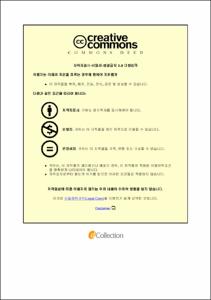실버 파우더 형상에 따른 최적의 감광성 실버페이스트 물성 연구
- Alternative Title
- A Study on the Properties of the Photosensitive Silver Paste with Silver Powder Shape
- Abstract
- Abstract
As electronic technology is rapidly evolving, Typified by a liquid crystal display device (LCD), organic light emitting transistor (OLED) Starting with flat panel display panel, Interest in printing electronic devices related to the display element is growing. recently, due to demand large screen, lighter and thinner electronic devices, to form an electrode constituting an electronic element to the area within a certain and it is necessary to form fine patterns, at assembly (packaging) packaging of electronic devices thereof. Therefore, research and development of the conductive paste has been actively conducted.
The conductive paste or conductive ink means that the role of Conductive path so that it is possible circuit current flows. Conductive ink is formed of a conductive filler and polymer binder. And is formed via various methods inkjet printing, gravure printing, roll-to-roll printing, offset printing, and photosensitivity. Among them, a photosensitive pattern forming method is a technique that combines photolithography process and screen printing. If it is desired to form a pattern by a screen printing method, the operation is simple. but Process characteristics, there is a disadvantage due to a limitation of mesh (mesh). the implementation of the fine pattern of L / S = 50/50 or less is difficult. Photolithography process facilitates the implementation of a fine pattern, but the workability and productivity is low, and the pattern formation phenomena that occur in the processing of waste disposal costs, environmental pollution, has the disadvantage of high production costs. When using the gravure printing method and offset printing method, there is a problem that the continuity of the work is reduced.
Using ultraviolet (UV) energy, to complement the disadvantage has the advantage of a fine pattern implementation with relatively simple workability that it is easy, It has the advantage of being able to ensure the continuity of the work.(Increase in the number of wires by of multi-touch, Finer line width due to narrowing of the bejel section, Extension of wiring distance due to the size of the panel, Lighter printing material) In particular, the law etching through the photosensitive pattern formation process can be simplified compared to the number of processes, and the difficulty of a simple screen printing less than 50 ㎛, for example, fine patterns of less than 30 ㎛ can be implemented.
In this research, four different silver powders with specific sizes and shapes were used in order to produce photosensitive silver paste. The produced silver paste was checked in order to see whether its rheological properties and its micro-conductive pattern specific to the touch panel were well embodied. Moreover, the conductance of the paste, with reference to its drying system, was evaluated. As a result, the lowest resistance was achieved when the particle mean diameter was D50=0.8∼1.0㎛, which also produced the highest pattern sharpness. The drying system where IR/IR method was used for both pre-drying and post-drying processes resulted in the lowest resistance.
- Issued Date
- 2015
- Awarded Date
- 2015. 8
- Type
- Dissertation
- Publisher
- 부경대학교 대학원
- Affiliation
- 부경대학교 인쇄공학과
- Department
- 대학원 인쇄공학과
- Advisor
- 남수용
- Table Of Contents
- 목 차
목차 ⅰ
List of Figures ⅳ
List of tables ⅴ
Abstract ⅵ
Ⅰ. 서 론 1
Ⅱ. 이 론 3
1. TSP(Touch Screen Panel) 3
가. TSP 기본 구조 3
나. TSP의 작동원리 4
2. UV(Ultra Vilolet) 경화 시스템 6
가. UV 시스템의 개요와 반응기구 6
나. UV(Ultra-Violet) 경화원리 7
다. UV(Ultra-Violet) 시스템의 특징 9
라. UV(Ultra-Violet) 경화재료의 조성 10
3. 스크린 인쇄 기술 11
4. 전도성 페이스트 14
가. 전도성 필러 17
나. 바인더 18
다. Percolation point 와 percolation curve 18
라. 전도성 페이스트 분산 기술 19
5. 레올로지 21
가. 동적 점탄성 24
Ⅲ. 실 험 27
1. 시료 27
가. Ag Powder 27
(1) 전도성 필러 27
(2) 바인더 28
(3) 광개시제 29
나. Ag 페이스트 제조 31
다. 스크린 인쇄 33
라. 전열 처리 공정 34
마. 노광 공정 34
바. 현상 – 수세 공정 36
사. 후열 처리 공정 36
2. 측정 및 분석 37
가. Ag 페이스트의 분산 특성 측정 37
나. Ag 페이스트의 레올로지 특성 측정 37
다. 전도성패턴의 인쇄적성 및 경화특성 측정 37
라. 전도성패턴의 접착성 측정 38
마. 전도성패턴의 전기전도성 측정 38
Ⅳ. 결과 및 고찰 40
1. 감광성 실버 페이스트의 점도 및 점탄성 결과 40
2. 각 실버 페이스트의 20/20㎛ 패턴 결과 42
3. 각 실버 페이스트의 건조방식에 따른 저항치 결과 42
4. 각 실버 페이스트 기재와의 접착성 및 경도 43
Ⅴ. 결 론 46
참고문헌 48
- Degree
- Master
- Files in This Item:
-
-
Download
 실버 파우더 형상에 따른 최적의 감광성 실버페이스트 물성 연구.pdf
기타 데이터 / 3.48 MB / Adobe PDF
실버 파우더 형상에 따른 최적의 감광성 실버페이스트 물성 연구.pdf
기타 데이터 / 3.48 MB / Adobe PDF
-
Items in Repository are protected by copyright, with all rights reserved, unless otherwise indicated.